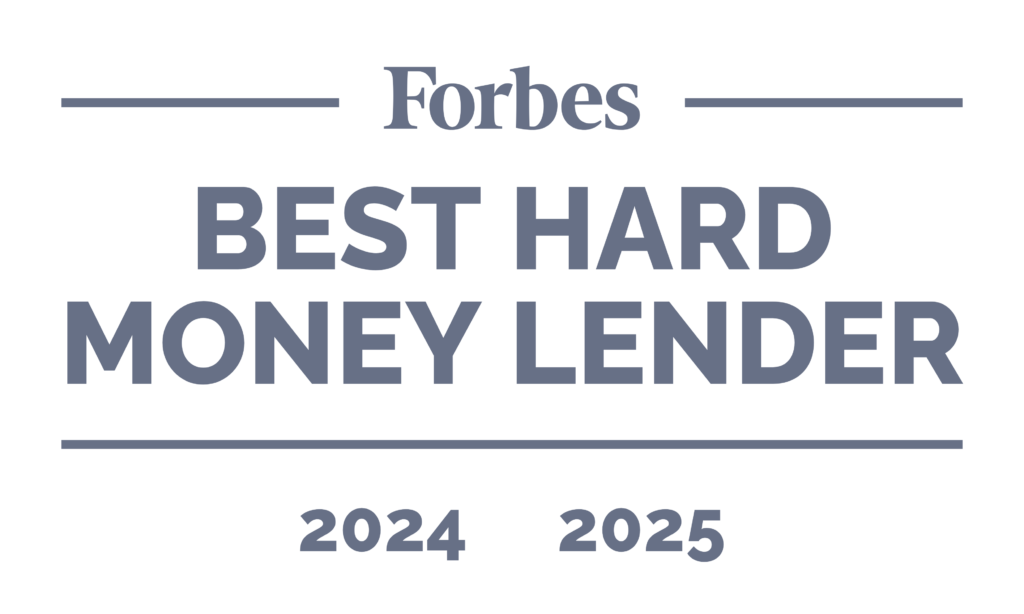Contents
- Executive Summary
- Introduction
- Macroeconomic Factors Influencing the Housing Market
- Regional and Sectoral Analysis
- Predictions for 2025
- Actionable Insights for Stakeholders
- Conclusion
1. Executive Summary
Market volatility has become a defining feature of the US housing market in 2025, driven by a complex interplay of macroeconomic factors.
Interest rates, inflation, an imbalance in supply and demand, and shifting demographics are creating both challenges and opportunities for investors, policymakers, and developers. Understanding these dynamics is critical for making informed decisions and navigating market uncertainty.
Following a period of post-pandemic recovery, the US housing market has faced mounting pressure from rising interest rates and persistent inflation. Mortgage rates climbed above 7% in 2024, tightening affordability and reducing transaction volume.
Supply constraints—caused by labor shortages, higher construction costs, and restrictive zoning laws—have widened the gap between housing supply and demand, particularly in high-growth regions like the Sunbelt.
Migration patterns driven by remote work have accelerated regional shifts, with increased demand for suburban housing and declining interest in major urban centers. Meanwhile, government policies – including tax incentives and housing development grants – have introduced further complexity, creating uneven impacts across states and metropolitan areas.
This paper explores the key macroeconomic drivers influencing the US housing market in 2025, offering detailed analysis and forecasts for housing prices, mortgage rates, and investment opportunities.
It compares regional and sectoral trends, highlighting emerging opportunities and risks. Tailored recommendations are provided for investors, policymakers, and developers to help them respond effectively to market volatility and align strategies with evolving market conditions.
By examining current trends and future projections, this paper equips US-based stakeholders with actionable insights to navigate an increasingly complex housing market landscape.
2. Introduction

The US housing market stands at a crossroads in 2025. After years of post-pandemic recovery, macroeconomic factors are reshaping the landscape for buyers, sellers, and investors alike. The volatility of market rates has become a central driver of housing market performance – influencing everything from mortgage affordability to investment strategies.
Understanding these dynamics is essential for navigating a market that remains both unpredictable and highly competitive.
Scope and Context
The US housing market has faced significant disruption over the past five years. The Federal Reserve’s aggressive rate hikes in response to inflationary pressures have pushed mortgage rates to their highest levels in over two decades.
At the same time, construction costs have surged due to supply chain disruptions and labor shortages, further limiting new housing supply. Looking to the future, a planned 25% tariff on lumber imports aims to protect domestic producers but is likely to increase construction costs, which could slow new construction even further.
Objective
This paper aims to provide a comprehensive analysis of the macroeconomic factors influencing the US housing market in 2025. It will examine how interest rates, inflation, supply and demand imbalances, government policies, and demographic shifts are impacting housing prices, affordability, and investment opportunities.
Through a detailed regional and sectoral analysis, the paper will offer actionable insights for investors, policymakers, and developers to help them adapt strategies and make informed decisions in a volatile market.
3. Macroeconomic Factors Influencing the Housing Market

2025’s housing market is shaped by a complex and interconnected set of macroeconomic factors, combining to create an environment of uncertainty. Understanding how these factors influence housing prices, affordability, and investment opportunities is essential for navigating this volatile market effectively.
Interest Rates
Interest rates have had a profound impact on the US housing market over the past two years. After a series of aggressive hikes by the Federal Reserve in response to inflation, mortgage rates rose sharply – surpassing 7% in 2024 for the first time since the early 2000s. While the Fed has signaled a more cautious approach to further increases in 2025, rates remain elevated compared to pre-pandemic levels.
Higher interest rates have tightened mortgage affordability, pricing many first-time buyers out of the market and reducing overall transaction volumes. For investors, higher borrowing costs have increased the cost of capital, leading to more cautious investment strategies and a slowdown in new developments. However, elevated rates have also driven demand for rental properties, as potential buyers shift toward leasing rather than purchasing.
Key Impact:
- Declining home sales due to affordability challenges.
- Increased demand for rental housing.
- Higher borrowing costs leading to more conservative investment strategies.
Inflation
Inflation remains a significant headwind for the housing market in 2025. After peaking at 9.1% in 2022, inflation gradually declined but remained above the Federal Reserve’s 2% target throughout 2024 and into 2025.
Elevated inflation has pushed up construction costs, including materials and labor, contributing to higher home prices.
Rising costs have also affected the rental market. Landlords have passed higher costs onto tenants, driving rent inflation in major metropolitan areas. At the same time, elevated consumer prices have reduced disposable income, making it harder for potential buyers to save for down payments or qualify for mortgages.
Key Impact:
- Increased home prices due to rising construction and labor costs.
- Higher rents, especially in urban markets.
- Reduced consumer purchasing power and affordability
Supply and Demand Dynamics
The US housing market continues to face a structural supply shortage. Years of underbuilding following the 2008 financial crisis left the market undersupplied even before the pandemic. Supply chain disruptions, labor shortages, and higher material costs have exacerbated this imbalance, slowing new housing construction despite strong demand.
Regional differences have emerged, with fast-growing Sunbelt states (like Texas and Florida) experiencing significant demand growth driven by domestic migration and job creation. In contrast, high-cost markets like California and New York have seen slower growth due to affordability challenges and outbound migration.
Key Impact:
- Housing shortages continue to push up prices in high-demand regions.
- Fast-growing Sunbelt markets benefit from population and job growth.
- Developers face challenges in keeping pace with demand due to rising costs and labor shortages.
Government Policies
In recent years, federal and state governments have introduced a range of housing policies to address affordability and supply issues. The Biden administration’s Affordable Housing Act of 2024 included incentives for developers to build affordable housing and expanded tax credits for first-time buyers. State-level initiatives, including zoning reforms and rent control measures, have created mixed impacts across regional markets.
For investors, government incentives for energy-efficient housing and mixed-use developments have opened new opportunities. However, increased regulatory scrutiny, particularly around tenant protections and rental caps, has introduced new compliance challenges.
The recent change in administration is likely to take a new approach with regards to housing, causing further uncertainty within the already volatile market.
Key Impact:
- Incentives for affordable housing and sustainable development.
- Zoning reforms creating new development opportunities.
- Mixed impact from rent control and tenant protection laws.
Demographics and Workforce Trends
Demographic shifts are reshaping housing demand across the US. Millennials and Gen Z are entering prime homebuying age, increasing demand for starter homes and affordable housing options. However, high interest rates and limited inventory have delayed homeownership for many younger buyers.
Remote work trends have persisted, influencing migration patterns and regional demand. Suburban and Sunbelt markets have benefited from increased remote worker migration, while some urban centers have struggled to recover pre-pandemic occupancy levels. Baby Boomer downsizing has also increased inventory in certain markets, particularly in coastal regions.
Key Impact:
- Increased demand for affordable starter homes.
- Strengthened suburban and Sunbelt markets due to remote work migration.
- Increased inventory from Baby Boomer downsizing in certain markets.
4. Regional and Sectoral Analysis

The US housing market in 2025 is highly fragmented, with significant variation across regions and property sectors. While some markets have seen rapid recovery and growth, others have struggled under the pressure of rising rates and supply constraints. This section explores the geographic and sectoral differences shaping the market, providing a nuanced understanding of where risks and opportunities lie.
Regional Analysis
Sunbelt (Texas, Florida, Arizona, North Carolina)
The Sunbelt remains the fastest-growing region in the US, fueled by strong domestic migration, job growth, and relatively lower housing costs. The shift toward remote work has made Sunbelt states more attractive to younger buyers seeking affordability and a higher quality of life. Developers have responded with increased construction activity, particularly in suburban areas, though supply challenges persist due to labor shortages and high material costs.
- Home Prices: Expected to rise moderately (3%–5%) due to continued demand and limited supply.
- Rental Market: Strong growth in multifamily construction to meet demand.
- Investment Opportunities: High potential for build-to-rent developments and mixed-use residential projects.
West Coast (California, Washington, Oregon)
High housing costs, strict zoning laws, and regulatory pressures have weighed on the West Coast market. Outbound migration, particularly from California, has created downward pressure on prices in certain urban areas. However, strong job markets in the tech and entertainment sectors have supported demand in premium markets like San Francisco and Los Angeles.
- Home Prices: Flat to moderate growth (0%–2%), with some softening in high-cost urban markets.
- Rental Market: Strong demand for rental housing due to high homeownership barriers.
- Investment Opportunities: High-end multifamily and mixed-use projects remain attractive.
Midwest (Illinois, Ohio, Michigan, Minnesota)
The Midwest has seen more stability due to lower housing costs and slower population growth. While affordability remains a strength, slower job creation and reduced inward migration have limited demand growth. However, regional manufacturing growth and increased infrastructure investment have supported economic stability.
- Home Prices: Modest growth (1%–3%), with stable demand in suburban areas.
- Rental Market: Moderate growth in affordable rental housing.
- Investment Opportunities: Industrial and logistics developments benefiting from manufacturing growth.
Northeast (New York, Massachusetts, Pennsylvania, New Jersey)
The Northeast remains a high-cost market, with affordability challenges and outbound migration continuing to weigh on demand. However, strong job markets in financial services and healthcare have supported rental demand in major urban centers. The shift toward suburban living has strengthened demand for single-family homes in commuter areas.
- Home Prices: Slow growth (1%–2%), with stronger performance in suburban markets.
- Rental Market: Stable demand, particularly for high-end urban rentals.
- Investment Opportunities: Urban-to-suburban migration trends creating opportunities for mixed-use and residential developments.
Sectoral Analysis
Residential Sector
The residential sector remains the most sensitive to interest rate changes. High mortgage rates have softened demand for single-family homes, particularly in high-cost urban markets. However, demand for rental housing remains strong as potential buyers delay homeownership.
- Single-Family Homes: Supply constraints continue to push up prices in high-demand markets.
- Multifamily Housing: Strong investor interest in build-to-rent developments due to stable rental income.
- Luxury Housing: Demand remains concentrated in major metropolitan areas despite rising rates.
Commercial Sector
The commercial sector is undergoing a structural shift driven by changes in work patterns and retail demand.
- Office Space: High vacancy rates persist in major urban centers due to remote work. Class A office space remains resilient, but older properties face declining value.
- Retail: Brick-and-mortar retail continues to face challenges from e-commerce, but experiential retail (e.g., restaurants, entertainment) is seeing a rebound.
- Industrial: Warehousing and logistics facilities remain highly sought after, driven by e-commerce growth and supply chain diversification.
- Hospitality: Recovery has been uneven, with stronger performance in leisure-driven markets compared to business travel hubs.
Key Takeaways:
- The Sunbelt remains the most dynamic housing market, benefiting from population and job growth.
- The West Coast and Northeast face affordability challenges and slower growth.
- The Midwest offers stability, particularly in industrial and logistics markets.
- Multifamily and industrial sectors are the strongest performers, while office and retail face structural challenges.
- Regional migration patterns and supply constraints will continue to create uneven performance across markets.
5. Predictions for 2025

Market conditions in 2025 will continue to reflect the aftershocks of rising interest rates, inflationary pressures, and supply-demand imbalances. While some regions and sectors are poised for growth, others face headwinds from affordability challenges and shifting demographic trends. Below are key forecasts for the US housing market over the next 12 months, based on current macroeconomic trends and market dynamics.
Housing Prices
Home price growth is expected to slow compared to the rapid increases seen during the post-pandemic recovery. High borrowing costs and affordability constraints will weigh on demand, particularly in high-cost coastal markets. However, supply shortages in key growth regions (e.g., the Sunbelt) will support moderate price appreciation.
- National home prices: Expected to rise 2%–4% in 2025, with stronger growth in the Sunbelt and suburban markets.
- West Coast and Northeast: Flat to 1%–2% growth due to affordability challenges and softening demand.
- Sunbelt and Midwest: Higher growth of 3%–5% due to continued migration and job growth.
Mortgage Rates and Affordability
The Federal Reserve is expected to maintain a cautious stance on rate cuts in 2025, keeping mortgage rates elevated but stable. This will continue to strain affordability and limit buyer activity, particularly for first-time homebuyers.
- 30-year fixed mortgage rates: Projected to remain between 6.5%–7.5% throughout 2025.
- Affordability index: Expected to remain near historic lows, particularly in high-cost urban markets.
- Impact: Continued shift toward rental housing and multi-family development as buyers struggle to qualify for mortgages.
Investment Opportunities
Rising borrowing costs and market uncertainty will push investors to adopt more selective and defensive strategies. Capital will flow toward stable, income-generating assets and markets with strong underlying demand.
- Multifamily Housing: High rental demand will continue to drive investment in the build-to-rent sector.
- Industrial and Logistics: Strong e-commerce and supply chain diversification will support robust demand for warehousing and distribution centers.
- Sunbelt and Midwest: Migration and job growth will create opportunities for residential and mixed-use developments.
- Office and Retail: Investors will focus on upgrading and repurposing existing assets rather than new development.
Regional Performance
Regional disparities will remain pronounced in 2025, reflecting differences in economic growth, housing supply, and migration trends.
- Sunbelt: Continued population and job growth will support strong price appreciation and rental demand.
- West Coast: High housing costs and regulatory challenges will limit growth, but premium markets will remain stable.
- Midwest: Economic stability and affordability will support moderate growth, with increased demand for industrial assets.
- Northeast: Affordability challenges will persist, but suburban markets will outperform urban centers due to migration patterns.
Construction and Supply
Despite strong demand, new housing construction will face ongoing headwinds from high costs and labor shortages. Developers will focus on high-demand regions and more affordable housing segments.
- Single-family home construction: Expected to remain flat or grow modestly (0%–2%) due to high costs and tight financing.
- Multifamily housing: Moderate growth (2%–4%) supported by rental demand and investor interest.
- Supply shortages: Expected to persist in the Sunbelt and key urban markets.
Policy and Regulatory Outlook
The Trump administration’s housing policies are likely to tighten housing affordability and increase market volatility, particularly for lower-income and first-time buyers.
- Proposed HUD workforce cuts of up to 50% could disrupt rental subsidies, disaster recovery, and affordable housing programs.
- A 25% tariff on lumber imports will likely increase construction costs and slow new housing developments.
- Halting of a $1 billion affordable housing program puts low-income housing projects at risk.
- Recent executive orders affecting building codes and regulations could create further uncertainty for developers and investors.
Key Takeaways:
- National home prices will grow 2%–4%, with stronger performance in the Sunbelt and Midwest.
- Mortgage rates will remain elevated, keeping affordability tight and supporting rental demand.
- Multifamily and industrial assets will offer the most stable investment opportunities.
- Regional disparities will persist, with the Sunbelt and Midwest leading growth.
- Supply shortages and labor challenges will limit new construction despite demand.
- Policy changes are expected to increase construction costs, reduce affordable housing support, and heighten market uncertainty.
6. Actionable Insights for Stakeholders

The volatility of the US housing market in 2025 creates both risks and opportunities for market participants. Investors, policymakers, and developers will need to adapt their strategies to navigate higher interest rates, supply shortages, and shifting demographic trends.
The following recommendations provide targeted insights to help stakeholders align their approaches with current and emerging market conditions.
For Real Estate Investors
Investors face a more selective and competitive environment in 2025. Higher borrowing costs and market uncertainty require a shift toward defensive, income-generating assets and strategic diversification.
Focus on rental housing and build-to-rent opportunities.
- High mortgage rates will keep homeownership out of reach for many, driving demand for rental properties.
- Multifamily developments in high-demand Sunbelt and Midwest markets offer stable cash flow and long-term appreciation potential.
Prioritize industrial and logistics assets.
- Supply chain diversification and e-commerce growth will continue to drive demand for warehouse and distribution space.
- Secondary markets near major logistics hubs offer strong yield potential.
Seek value in distressed office and retail assets.
- Office and retail properties with high vacancy rates may present repositioning opportunities.
- Converting older office buildings to mixed-use or residential units could unlock value.
Diversify geographically.
- High-growth regions like the Sunbelt and Midwest offer more upside potential than saturated coastal markets.
- Regional migration patterns and economic shifts will create new investment opportunities in suburban and secondary markets.
For Policymakers
Federal and state governments have a critical role in addressing housing affordability and supply constraints. Policy decisions in 2025 will need to balance encouraging new development with protecting tenants and stabilizing the market.
Expand incentives for affordable housing development.
- Increased tax credits and low-interest financing for affordable and workforce housing will help close the supply gap.
- Partnering with private developers to create mixed-income communities can accelerate delivery of affordable units.
Streamline zoning and permitting processes.
- Outdated zoning laws and lengthy permitting procedures remain key barriers to new construction.
- State-level reforms to increase housing density and allow mixed-use development will support higher supply.
Support energy-efficient and sustainable housing.
- Incentives for green building materials and sustainable construction methods can reduce long-term operating costs.
- Federal and state funding for energy-efficient upgrades will benefit both developers and tenants.
Implement targeted rent controls carefully.
- Broad rent control measures may discourage new development.
- Targeted protections for low-income renters combined with developer incentives can create a balanced approach.
For Developers
Developers face rising costs, labor shortages, and supply chain challenges in 2025. Success will depend on strategic market positioning and operational efficiency.
Focus on high-demand suburban and Sunbelt markets.
- Sunbelt and Midwest regions offer the highest demand growth and strongest rental yields.
- Target build-to-rent and multifamily developments where rental demand is strong.
Leverage public-private partnerships.
- Government incentives for affordable housing and sustainable development can reduce capital costs.
- Partnering with municipalities on mixed-use projects can accelerate approvals and unlock development sites.
Adapt to shifting buyer and renter preferences.
- Remote work trends and demographic shifts are increasing demand for flexible, multi-functional living spaces.
- Incorporating co-working spaces, outdoor areas, and sustainable features can increase marketability.
Mitigate construction cost volatility.
- Lock in long-term supplier contracts and explore modular construction techniques to control costs.
- Investing in supply chain diversification and alternative materials will reduce exposure to market disruptions.
Key Takeaways:
- Investors should prioritize rental, industrial, and mixed-use assets while diversifying geographically.
- Policymakers should focus on affordable housing incentives, zoning reforms, and sustainable development.
- Developers should align projects with demographic shifts and adopt strategies to control construction costs.
- Cross-sector collaboration will be essential to addressing supply-demand imbalances and improving market stability.
7. Conclusion

The US housing market in 2025 stands at a pivotal moment. Rising interest rates, inflation, supply shortages, and demographic shifts have created a volatile but opportunity-rich environment. While affordability remains a challenge for many buyers, strong rental demand and resilient growth in high-migration regions like the Sunbelt and Midwest present opportunities for investors and developers.
Market volatility is expected to persist through 2025, requiring stakeholders to adopt strategic and adaptive approaches. Investors will need to focus on defensive, income-generating assets, particularly in the multifamily and industrial sectors. Developers should align projects with shifting buyer and renter preferences, while policymakers have a crucial role in removing supply-side barriers and supporting affordable housing development.
Understanding the underlying macroeconomic forces driving the market is key to navigating this uncertainty. By staying informed and strategically adjusting to market shifts, investors, developers, and policymakers can position themselves for success in a complex and rapidly evolving housing market.
8. References
- Fortune. (2025, March 12). Current Mortgage Rates Report for March 12, 2025: Rates Continue to Hold Steady Right Above the 6.5% mark. Retrieved from: https://fortune.com/article/current-mortgage-rates-03-12-2025/
- The Wall Street Journal (2025, March 13). It’s Not a Great Time to Be a Saver – or a Borrower. Retrieved from: https://www.wsj.com/personal-finance/its-not-a-great-time-to-be-a-saveror-a-borrower-819481cd
- Associated Press. (2025, March 13). Average US rate on a 30-year mortgage edges higher, ending a seven-week slide. Retrieved from https://apnews.com/article/de19c094fa02066168a06f9f416e4def
- Reuters. (2025, March 8). Fed should be careful, deliberate with interest rate policy, Daly says. Retrieved from: https://www.reuters.com/markets/us/fed-should-be-careful-deliberate-with-rates-given-economic-uncertainties-daly-2025-03-08/
- Barron’s. (2025, March 12). When Will I Be Able to Buy a Home? Never, Say Many Americans. Retrieved from https://www.barrons.com/advisor/articles/never-buy-a-home-cac908a1
- The Guardian. (2025, March 12). US Annual Inflation Rate in February Remains Relatively Stable at 2.8%. Retrieved from: https://www.theguardian.com/business/2025/mar/12/februrary-inflation-rate
- National Association of Home Builders Eye on Housing. (2024, September 5). House Price Appreciation by State and Metro Area: Second Quarter of 2024. Retrieved from: https://eyeonhousing.org/2024/09/house-price-appreciation-by-state-and-metro-area-second-quarter-2024/
- Global Property Guide. (November 15, 2024). The United States Residential Property Market Analysis 2024. Retrieved from: https://www.globalpropertyguide.com/north-america/united-states/price-history
- MarketWatch. (2025, March 14). Rocket-Redfin deal could make home buying more convenient—and more expensive. Retrieved from https://www.marketwatch.com/story/rocket-redfin-deal-could-make-home-buying-more-convenient-and-more-expensive-dab106ff/
- Axios. (2025, March 13). How COVID-19 changed San Antonio’s housing market. Retrieved from https://www.axios.com/local/san-antonio/2025/03/13/covid-housing-market-trends-prices
- Investopedia. (2025, March 14). Here’s How a Government Shutdown Could Stall Thousands of Home Sales. Retrieved from https://www.investopedia.com/home-builders-sellers-warn-shutdown-of-flood-insurance-program-could-stall-thousands-of-sales-11696493
- The Wall Street Journal. (2025, March 13). Big Metro Areas, Like NYC, Grew Because of Immigration, New Census Data Show. Retrieved from https://www.wsj.com/us-news/census-new-data-immigration-a73956e9
- Associated Press. (2025, March 14). Trump administration looks to slash HUD workers tackling the housing crisis. Retrieved from https://apnews.com/article/0176c8539fa9b5959198c351c97b8652
- Politico. (2025, February 20). ‘Enormous fear’: Housing industry braces for Trump tariffs, workforce cuts. Retrieved from https://www.politico.com/news/2025/02/20/housing-industry-trump-workforce-cuts-00205272
- Associated Press. (2025, March 10). Affordable housing threatened as Trump halts $1 billion slated for extending life of aging buildings. Retrieved from https://apnews.com/article/de27d7846271779157550fcec0a78ea6
- CT Insider. (2025, March 11). Trump’s executive orders and their impact on jobs and housing. Retrieved from https://www.ctinsider.com/business/article/ct-trump-executive-orders-jobs-housing-prices-20046956.php






